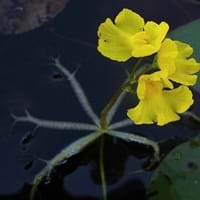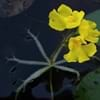Life Span
Annual and Perennial
Perennial
Origin
World/Pandemic
North America, Canada, Mexico
Types
Utricularia graminifolia, Utricularia vulgaris, Utricularia gibba
Bigleaf hydrangea, Hortensia, Smooth hydrangea, Oakleaf hydrangea, Annabelle
Habitat
Lakes, stream banks
Forest edges, Hillside, Woods
USDA Hardiness Zone
Not Available
Not Available
AHS Heat Zone
Not Available
9*1
Sunset Zone
21,22
1a, 1b, 2a, 2b, 3a, 3b, 4, 5, 6, 7, 8, 9, 10, 11, 14, 15, 16, 17, 18, 19, 20, 21, 22, 23
Habit
Spreading
Upright/Erect
Flower Color
Yellow, Purple, Lavender
Blue, Dark Purple, Light Purple, Red, White
Flower Color Modifier
Not Available
Bicolor
Fruit Color
Non Fruiting Plant
Not Available
Leaf Color in Spring
Not Available
Green, Light Green, Blue Green, Gray Green
Leaf Color in Summer
Not Available
Light Green
Leaf Color in Fall
Not Available
Red, Green, Orange, Blue Green, Gray Green, Bronze
Leaf Color in Winter
Not Available
Tan, Sandy Brown
Leaf Shape
Orbicular
Oblovate
Plant Season
Spring, Summer, Fall
Spring, Summer, Fall, Winter
Sunlight
Full Sun
Full Sun, Partial Sun
Type of Soil
Not Available
Clay, Loam, Sand
The pH of Soil
Acidic, Neutral
Acidic, Neutral, Alkaline
Soil Drainage
Not Available
Average
Bloom Time
Not Available
Early Summer, Summer, Late Summer
Tolerances
Wet Site
Pollution, Soil Compaction
Where to Plant?
In Water
Container, Ground
How to Plant?
Divison, Seedlings
Seedlings, Stem Planting
Plant Maintenance
Medium
Medium
Watering Requirements
Requires 4 to 8 inches of water above the soil line
Not Available
In Summer
Lots of watering
Drought Tolerant, Average Water
In Spring
Moderate
Moderate
In Winter
Average Water
Average Water
Soil pH
Acidic, Neutral
Not Available
Soil Type
Not Available
Not Available
Soil Drainage Capacity
Not Available
Not Available
Sun Exposure
Full Sun
Not Available
Pruning
Cut away fading foliage, Remove damaged leaves, Remove dead branches, Remove dead leaves
Remove damaged leaves, Remove dead branches, Remove dead leaves
Fertilizers
All-Purpose Liquid Fertilizer
All-Purpose Liquid Fertilizer
Pests and Diseases
hair algae
Red blotch
Plant Tolerance
Wet Site
Pollution, Soil Compaction
Flower Petal Number
Not Available
Single
Foliage Texture
Fine
Fine
Foliage Sheen
Matte
Not Available
Invasive
Sometimes
Not Available
Self-Sowing
No
Not Available
Attracts
Insects
Bees, Flies
Allergy
Avoid during Pregnancy
Chest tightness, Diarrhea, Dizziness, Nausea, Vomiting
Aesthetic Uses
Showy Purposes, Water gardening
Not Available
Beauty Benefits
Not Available
Not Available
Edible Uses
Yes
Not Available
Environmental Uses
Air purification
Air purification
Medicinal Uses
Diuretic, Vulnerary
Fever, Kidney problems, Urinary tract problems
Part of Plant Used
Leaves, Root
Flowers, Root
Other Uses
Food for animals, Showy Purposes
Not Available
Used As Indoor Plant
Insignificant
Not Available
Used As Outdoor Plant
Yes
Yes
Garden Design
Bog Garden, Container, Water Gardens, Wildflower
Not Available
Botanical Name
UTRICULARIA
PANICUM virgatum 'Northwind'
Common Name
Bladderwort
Northwind Switchgrass, Switchgrass
In Hindi
Bladderwort plant
Hydrangea
In German
bladderwort Pflanze
Hortensie
In French
plante Bladderwort
Hortensia
In Spanish
planta bladderwort
Hortensia
In Greek
φυτό υδρόβιο φυτό
υδραγεία
In Portuguese
planta bladderwort
Hortênsia
In Polish
Bladderwort roślin
Hortensja
In Latin
bladderwort herba
Hibiscus
Phylum
Magnoliophyta
Not Available
Class
Magnoliopsida
Not Available
Order
Scrophulariales
Not Available
Family
Lentibulariaceae
Not Available
Genus
Utricularia
Not Available
Clade
Angiosperms, Asterids, Eudicots
Not Available
Tribe
Not Available
Not Available
Subfamily
Pitcairnioideae
Not Available
Number of Species
Not Available
Season and Care of Bladderwort and Northwind Switchgrass
Season and care of Bladderwort and Northwind Switchgrass is important to know. While considering everything about Bladderwort and Northwind Switchgrass Care, growing season is an essential factor. Bladderwort season is Spring, Summer and Fall and Northwind Switchgrass season is Spring, Summer and Fall. The type of soil for Bladderwort is Not Available and for Northwind Switchgrass is Clay, Loam, Sand while the PH of soil for Bladderwort is Acidic, Neutral and for Northwind Switchgrass is Acidic, Neutral, Alkaline.
Bladderwort and Northwind Switchgrass Physical Information
Bladderwort and Northwind Switchgrass physical information is very important for comparison. Bladderwort height is 10.00 cm and width 5.00 cm whereas Northwind Switchgrass height is 150.00 cm and width 90.00 cm. The color specification of Bladderwort and Northwind Switchgrass are as follows:
Bladderwort flower color: Yellow, Purple and Lavender
Bladderwort leaf color: Not Available
Northwind Switchgrass flower color: Blue, Dark Purple, Light Purple, Red and White
- Northwind Switchgrass leaf color: Green, Light Green, Blue Green and Gray Green
Care of Bladderwort and Northwind Switchgrass
Care of Bladderwort and Northwind Switchgrass include pruning, fertilizers, watering etc. Bladderwort pruning is done Cut away fading foliage, Remove damaged leaves, Remove dead branches and Remove dead leaves and Northwind Switchgrass pruning is done Remove damaged leaves, Remove dead branches and Remove dead leaves. In summer Bladderwort needs Lots of watering and in winter, it needs Average Water. Whereas, in summer Northwind Switchgrass needs Drought Tolerant, Average Water and in winter, it needs Average Water.





